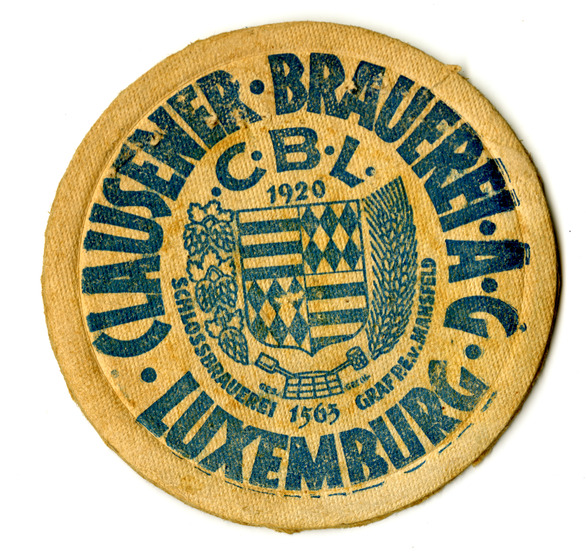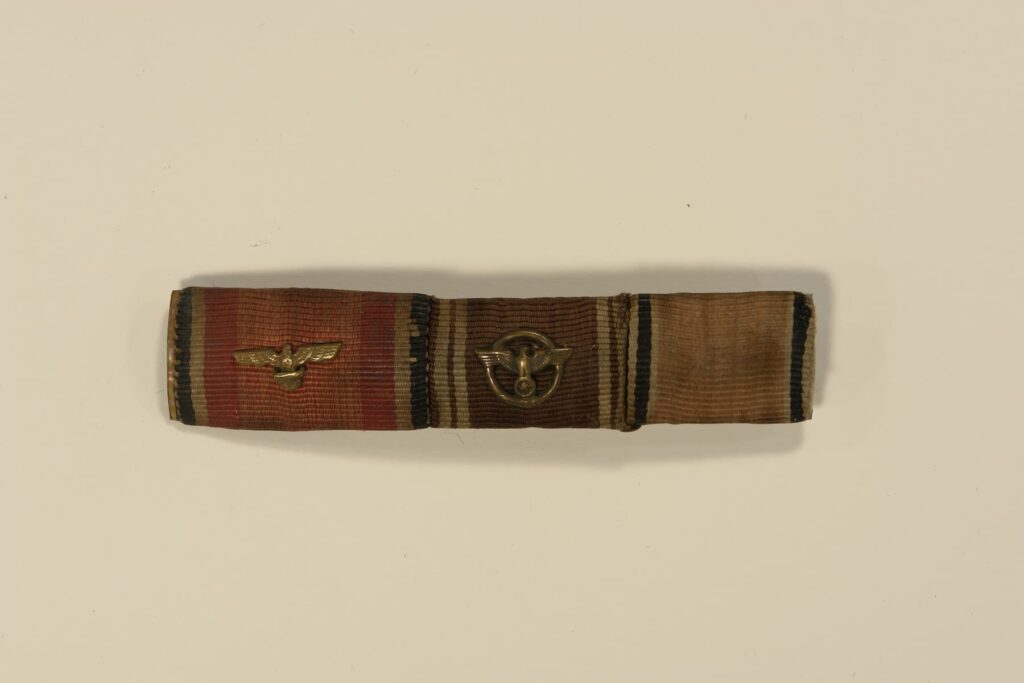[Continued from previous page] The day has passed very quietly. An occasional burst of artillery fire (ours) – nothing more. I ate three meals, wrote a couple of letters and hit the sack about 2400.
Thursday, 25 January [1945] Berbourg, [Luxembourg]
Up at 0700 this morning. Had breakfast at 0800 and spent about an hour on reports. The day has been quiet, received one letter from Mary, dated the 1st of December.1Mary Anna Louch (1917-2021) of Aberdeen, Maryland was Goetz’s fiancée. She married him immediately after his discharge from the Army on December 26, 1945. I thought this would happen. We have been here over a week (March Order). We spent the evening packing and now – after getting everything in traveling order – we are sitting in the C.P. discussing the war and allied subjects. We are to leave at 2345. I intend to sit up until then. The kitchen is going to keep hot coffee for us. Today has been very cold but it has been a splendid day for our air force.
Friday, 26 January 1945 Tavigny, Belgium2 Tavigny is a town within the Houffalize municipality of Belgium.
It is now 0030. We are at our IP waiting for our column to get home. It sho is cold. The 76 Div. is relieving the 87th or it could be Vice Versa. I haven’t been able to figure it out. Our column reached us about 0045 and we started our move to Tavigny. Our itinerary included- Luxembourg, Arlon, Bastogne, Houffalise.3Arlon is a municipality in the Belgian province of Luxembourg (not to be confused with the aforementioned Luxembourg, an independent nation). At the time of WWII, Arlon was located less than 40 km from the German border. As a result, it was one of the first Belgian areas occupied by German troops. By 1944, during the Battle of the Bulge, it had been recovered by Allied forces, and was a key stop for Patton and his troops before they marched on toward Bastogne. Bastogne is a municipality located in the Belgian province of Luxembourg. The siege of Bastogne, part of the larger Battle of the Bulge, took place in December 1944 between German and American forces. All seven major roads in the Ardennes range met at Bastogne, making it essential for the Germans to acquire in their campaign towards Antwerp. The Germans besieged the Americans at Bastogne for eight brutally violent days before Patton’s Third Army arrived and relieved the American forces. Houffalize is a small municipality located in the Belgian province of Luxembourg just north of Bastogne. It was a significant strategic point during the Battle of the Bulge, and was reduced almost entirely to rubble. On January 16, 1945, Montgomery and Patton, from the North and South respectively, were able to take Houffalize, linking the First and Third armies. The news was especially pleasing to Omar Bradley, who, as promised by Eisenhower, was able to regain command of the First army after the taking of the town. The last two cities named live only in the memories of those who survived the horrors and confusion attendent to their destruction. I am becoming inured to scenes of destruction such as that above but the sight of civilians (those that remain) standing amidst such ruins with that lack of expression which indicates [continued on next page]


